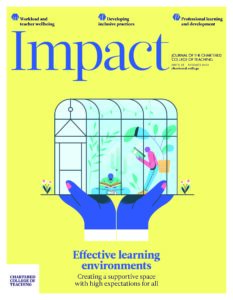Identifying ‘good practice’ language acquisition strategies in English as an additional language (EAL) classrooms in Spain
Written by: Shona O'Callaghan

5 min read
Shona O’Callaghan, EAL/Dyslexia specialist teacher, Spain
Introduction
This study is an investigation into examples of good practice language-support strategies found in two differing EAL educational settings in Spain. Through a qualitative research lens, data was collated, validated and cross-referenced, with the aim of identifying similar good practice techniques occurring across settings. Data demonstrates a wide range of support strategies implemented by teachers daily, as reflective teachers reveal the need for more peer support, communication and tailored training for teachers in EAL educational settings in Spain. Findings of this research, it is hoped, may lead to more effective communication between dissimilar methodological approaches to language learning, for improved teacher support and development.
Comparisons between CLIL (content and language integrated learning) and non-CLIL classrooms have been drawn, with the aim of identifying effective teaching and learning,
Join us or sign in now to view the rest of this page
You're viewing this site as a guest, which only allows you to view a limited amount of content.
To view this page and get access to all our resources, join the Chartered College of Teaching (it's free for trainee teachers and half price for ECTs) or log in if you're already a member.
- Commission of the European Communities (1995) White paper on education and training: Teaching and lLearning – towards the learning society. Available at: https://publications.europa.eu/en/publication-detail/-/publication/d0a8aa7a-5311-4eee-904c-98fa541108d8 (accessed 8 December 2018).
- Coyle D, Hood P and Marsh D (2010) CLIL: Content and Language Integrated Learning. Cambridge: Cambridge University Press.
- Crisfield E (2018) How can Euro-CLIL inform EAL practice? EAL Journal 6: 28–29.
- Lin MYL and Man EYF (2009) Key issues in immersion education: Implications for Hong Kong. In: Bilingual Education: South East Asian Perspectives. Hong Kong: Hong Kong University Press, pp. 1–173.
- Lorenzo F, Casal S and Moore P (2010) The effects of content and language integrated learning in european education: Key findings from the Andalusian bilingual sections evaluation project. Applied Linguistics 31(3): 418–442.
- Marsh D (2002) CLIL/EMILE – the European dimension: Action, trends and foresight potential. University of Jyvaskyla. Available at: https://jyx.jyu.fi/dspace/handle/123456789/47616?show=full (accessed 22 October 2017).
- Merriam SB and Tisdell JE (2015) Qualitative Research: A Guide to Design and Implementation, 4th ed. San Francisco: Jossey-Bass.
- Mishan F (2005) Authentic texts for language learning: The SLA rationale. In: Designing Authenticity into Learning Material. Bristol: Intellect Books Ltd, pp. 21–43.
- NALDIC (2018) A CLIL approach in UK mainstream classrooms. EAL Journal 6: 6. (
- Nikula T and Mård-Miettinen K (2014) Language learning in immersion and CLIL classrooms. In: Östman J-A and Verschueren J (eds) The Handbook of Pragmatics. Amsterdam: John Benjamins Publishing Company, pp. 1–27.
- The Bell Foundation (2017) Classroom support strategies: Working with EAL Learners in secondary settings. Available at: www.bell-foundation.org.uk/wp-content/uploads/2018/07/Classroom-Support-Strategies-Working-with-EAL-Learners-in-Secondary-Settings.pdf (accessed 2 January 2019).
- Wood D (1998) How Children Think and Learn: The Social contexts of Cognitive Development, 2nd ed. Oxford: Blackwell Publishing.
0
0
votes
Please Rate this content
Please login to comment
0 Comments
Oldest
Newest
Most Voted
Inline Feedbacks
View all comments










